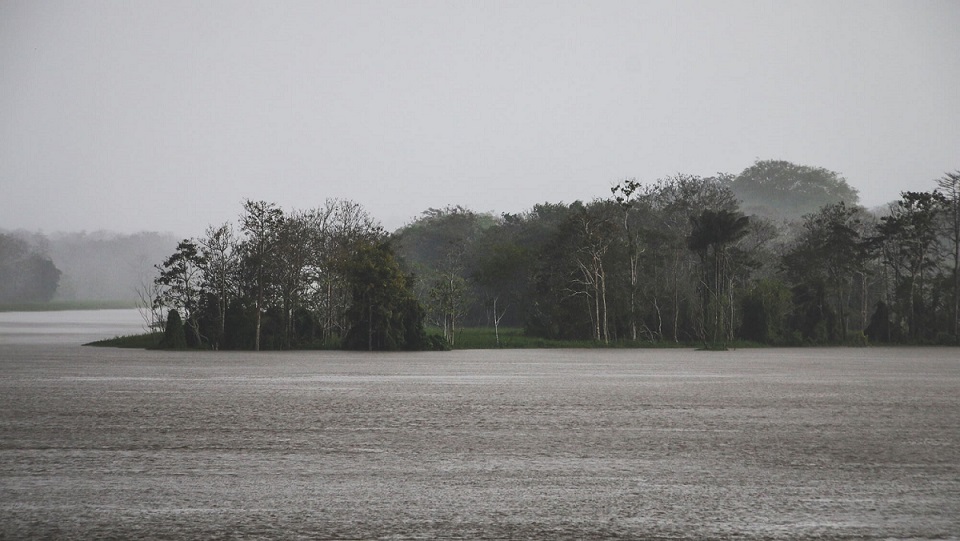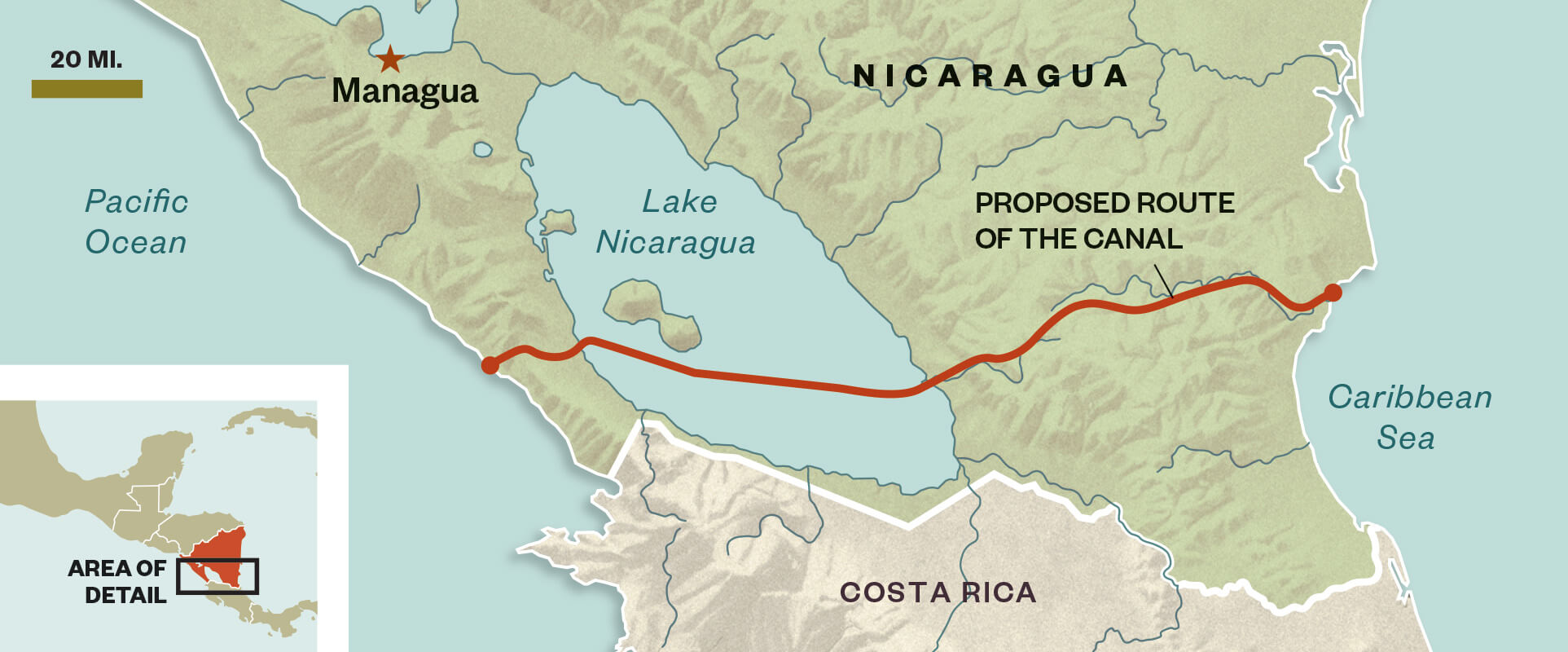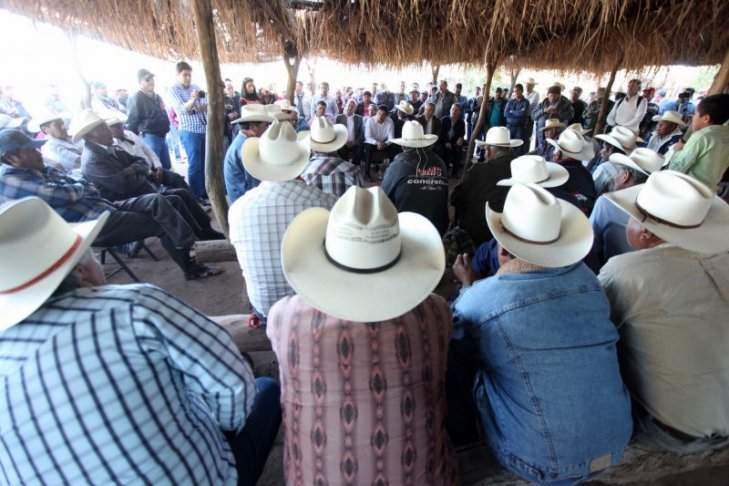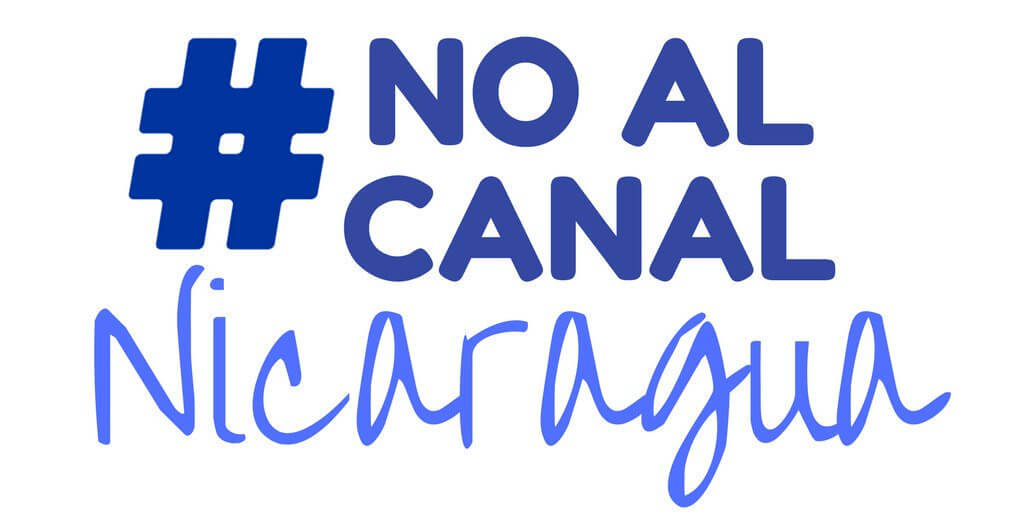
by Deep Green Resistance News Service | Apr 9, 2018 | Lobbying
Featured image: Dan From Indiana on flickr. Some Rights Reserved. The Rights of Nature Movement continues to advance through lawmaking and court decisions.
by The Community Environmental Legal Defense Fund (CELDF) via Intercontinental Cry
MERCERSBURG, PA, USA: Today, the Colombia Supreme Court of Justice issued a decision declaring that the Amazon region in Colombia possesses legal rights.
The Court declared that the “Colombian Amazon is recognized as an entity, a subject of rights” which include the right to “legal protection, preservation, maintenance and restoration.”
The Supreme Court’s decision builds on the precedent set in November 2016, when Colombia’s Constitutional Court ruled that the Atrato River possessed legal rights to “protection, conservation, maintenance, and restoration.” The Supreme Court refers to the 2016 decision in its ruling.
The Colombia Supreme Court ruling focused on the devastating impacts of deforestation and climate change on the Amazon, and the need to make significant change in how the region is protected.
In making its finding that the Amazon has rights, the Court cited the Constitutional Court’s 2016 opinion, in which that court wrote that it was “necessary to take a step forward in jurisprudence” to change the relationship of humankind with nature before “before it is too late or the damage is irreversible.”
The Community Environmental Legal Defense Fund (CELDF) – with its International Center for the Rights of Nature – has been at the forefront of the movement to secure legal rights of nature, partnering with communities, indigenous peoples, and governments in developing the world’s first Rights of Nature laws.
Transforming nature from being treated as property under the law, to be considered as rights-bearing – and thus in possession of legally enforceable rights – is the focus of the growing Rights of Nature movement.
Throughout history, women, indigenous peoples, and slaves have been treated as property under the law, without legal rights. Legal systems around the world today treat nature as property, and thus right-less. Under these systems, environmental laws regulate human use of nature, resulting in the decline of species and ecosystems worldwide, and the acceleration of climate change.
The first law was passed in Tamaqua Borough, Pennsylvania, in the United States, in 2006. Today, dozens of communities in more than 10 states in the U.S. have enacted Rights of Nature laws. CELDF assisted in drafting the first Rights of Nature constitutional provisions, which are part of the Ecuador Constitution of 2008.
Mari Margil, CELDF’s Associate Director who heads the organization’s International Center for the Rights of Nature explained, “The Court’s decision is an important step forward in moving to legal systems which protect the rights of nature.”
She added, “The collapse of ecosystems and species, as well as the acceleration of climate change, are clear indications that a fundamental change in the relationship between humankind and the natural world is necessary. We must secure the highest legal protections for nature through the recognition of rights.”
About the Community Environmental Legal Defense Fund (CELDF) & the International Center for the Rights of Nature
The Community Environmental Legal Defense Fund’s mission is to build sustainable communities by assisting people to assert their right to local self-government and the rights of nature. CELDF’s International Center for the Rights of Nature is partnering with communities and organizations in countries around the world to advance the rights of nature.
Today, CELDF is partnering with communities, indigenous peoples, and organizations across the United States, as well as in Nepal, India, Australia, and other countries to advance rights of nature legal frameworks.
by Deep Green Resistance News Service | Apr 4, 2018 | Lobbying
Spokane Judge Allows Necessity Defense; Washington State Appeals
Spokane – On March 8, Spokane District Court Judge Debra Hayes issued an order allowing for the necessity defense in a jury trial scheduled to start April 23, 2018, involving a climate change protestor’s alleged delay of oil and coal trains in September 2016. On March 30, the Spokane County Prosecuting Attorney’s Office appealed Judge Hayes’ ruling.
In September 2016, the Reverend George Taylor joined with fellow Veterans for Peace members to block coal and oil trains from passing through Spokane. Their action followed a similar action by the local Raging Grannies. All six protestors were charged with trespass and obstructing a train; five pled guilty for various reasons. Rev. Taylor chose to go forward to trial, and filed a motion asking the judge to allow him to present a “necessity defense,” i.e., that he committed one harm (trespass and blocking a train) to prevent greater harms (climate change and risks of oil train derailments).
After hearings on June 26 and August 21, 2017, Judge Hayes ruled that Taylor may present the necessity defense to the jury to justify his alleged civil disobedience. She noted, “Civil resistance is breaking a law to uphold a higher law when the threat is imminent and every legal means has not resulted in policy change.” (Order at p. 8).
“Climate change is real, and neither government nor industry is taking appropriate action to address it. Citizens therefore must bring their own voices and actions to bear to try to stop destruction of the planet,” said defendant Rev. George Taylor.
In this case, the necessity defense is based on two distinct environmental dangers to the Spokane area posed by transport of fossil fuels by train.
- First, the incineration of rail-transported coal and oil will contribute to climate change, which poses existential threats to the planet and all species, as soaring temperatures cause extreme weather patterns, disrupt ecosystems, and alter and destroy basic resources necessary for human life, including water availability and agricultural production.
- Second, rail transport of Bakken crude oil is extraordinarily dangerous as demonstrated by oil train derailments and explosions throughout North America, including at Mosier, Oregon on June 3, 2016.
Judge Hayes’ necessity order was supported by testimony of two experts: Dr. Steve Running, Professor of Global Ecology at the University of Montana and co-author of the 4th IPCC Report on Climate Change for which he shared the Nobel Peace Prize, and Prof. Tom Hastings, Assistant Professor of Conflict Resolution at Portland State University, and author of several books on civil resistance, including A New Era of Nonviolence (McFarland 2014).
Judge Hayes’ necessity order made numerous findings, including:
- The failure to act more forcefully to abate greenhouse gas (GHG) emissions will lead to harms that are severe, imminent, and irreparable, both at a global level and regionally in the Inland Northwest (Order at p.6);
- Civil resistance can be effective in bringing about social change; historic victories such as de-segregation and women’s suffrage have resulted from civil resistance and the same result could be accomplished for environmental protections, resulting in institutional, corporate and public policy changes (Order at p. 7); and
- When all other legal means have been taken, and those attempts have not resulted in change, the judicial branch is the last, best hope. (Order at p. 8).
“The judge nailed the problem: climate change is already causing adverse harms to the Inland Northwest ecosystems, which will in turn hurt people. And these harms will worsen. She found that it is reasonable to allow a jury to decide whether these harms outweigh George Taylor’s resistance actions for which he has been charged criminally,” said Rachael Paschal Osborn, Taylor’s attorney.
2016 saw the hottest global temperatures ever recorded; 2017, the second hottest year. The 400 parts per million of CO2 barrier has been exceeded – a key indicator of climate change – and the global average temperature continues to climb toward the two-degree Celsius threshold, a level that the international community has agreed should not be breached. This rise is expected to unleash even more erratic and devastating climate events such as the extreme wildfires experienced in the West and the devastating hurricanes that hit Texas, Florida, and Puerto Rico. In the U.S., we have long known that climate change is occurring but have failed to take action. Thirty years ago The New York Times reported that Climate Change Has Begun, Expert Tells Senate, but efforts to head off catastrophe have been continually delayed and thwarted by the fossil fuel industry.

by Deep Green Resistance News Service | Mar 20, 2018 | Lobbying
Featured image: Mario Lopez/EPA
by Gabriella Rutherford / Intercontinental Cry
Indigenous communities know all too well of the potentially devastating risks that the construction of mega-projects can entail. Time and again, such projects have led to irreparable environmental damage that harmed if not destroyed the well-being, culture, economy and traditional ways of local communities.
The Raizal Peoples who inhabit the San Andrés, Providencia and Santa Catalina archipelago, Colombia could become one more indigenous community to be affected in this way. Should Nicaragua’s plans to build a canal go ahead, there is the risk that the massive project—that would rival the Panama Canal—would muddy and pollute nearby waters and potentially destroy the reef on which the Raizals depend.
With the risk of environmental damage and potentially devastating consequences for the Raizal Peoples in mind, Colombia applied to the Inter-American Court for information as to how it might interpret human rights law in this case. In response, the Court issued an advisory opinion in which it elaborated at length on the relationship between the environment and human rights law.
The Court noted, “Environmental damage can cause irreparable damage to human beings. As such, a healthy environment is a fundamental right for the existence of humanity.”
Its findings, though non-binding, sent out a strong message to both the regional and international arena that not only is there an inextricable link between a healthy environment and human rights but that this should be accounted for in the interpretation of human rights instruments.
In practice, this means that someone could in theory now bring a case before the Court on the grounds that environmental damage had led to a violation of their human rights. While significant legal obstacles have previously made it difficult for affected parties to seek meaningful redress in such cases, the verdict could not be more timely.

Proposed route of The Nicaraguan Canal (Spanish: Canal de Nicaragua), formally the Nicaraguan Canal and Development Project (also referred to as the Nicaragua Grand Canal, or the Grand Interoceanic Canal)
To date, claimants in the Americas affected by environmental damage have struggled to pursue legal action for the violation of their human rights for the following reasons:
Right to a healthy environment (San Salvador Protocol, article 11) not accepted as basis for a claim
Firstly, despite the fact that Article 11 of The San Salvador Protocol explicitly sets out the right to a healthy environment, this right is non-justiciable. That is to say, no-one could use a violation of this right as a basis for which to file a petition to the Inter-American Commission of Human Rights, and subsequently the Inter-American Court. Instead, the affected individual or group would have to bring a case under Article 26 of the American Convention on Human rights, the rights of which are justiciable.
The problem is that, while Article 26 protects economic, cultural and social rights, the only obligation it imposes on States is that they progressively achieve the full realization of these rights, making it an aspirational ideal for member States. For this reason, neither the Commission or the Court had previously ever found in favour of a claimant who had asserted their rights under this article. Furthermore, is has been unclear whether the right to a healthy environment would be deemed as being included in the scope of the rights protected under Article 26.
Problems of transboundary cases
In some cases, the cause of environmental damage occasioned in a particular place lies outside of a country’s border. This is problematic because human rights instruments are traditionally understood to only hold states responsible for damage occasioned in that same state, not for damage outside of their borders. This rather nebulous realm of extraterritorial obligations is, as one legal expert noted, “the conundrum…that bedevils human rights law”. If we can find some clarity in this rather nebulous world of international law it is that no-one hoping to a pursue legal action through the regional courts in the case of a transboundary claim could be confident their claim would be admitted.
Problems of bringing claims on the basis of violation of right to life
In theory, another means through which a potential affected party could file their complaint with the Inter-American Commission would be through arguing that their right to life had been violated as a result of environmental degradation. However, case law from the Inter-American Court shows that should a complainant want to argue their case on this basis, they would have to prove that the state had taken action which could be deemed to have an “immediate” and “certain” consequence on their exercise of their right to life–and that action wasn’t taken to “reasonably” prevent the risk of this happening.
There are cases which fall into this category such as Sarayaku vs. Ecuador, where explosives were laid on the Sarayaku territory or, for example, in Yanomami vs. Brasil where a highway was built though Yanomami land which resulted in several deaths. This said, clearly trying to prove the immediacy and certainty of a risk to life and integrity limits the number of cases significantly. By means of example, in 2005 when the Inuit argued that their traditional means of subsistence had been destroyed by climate change, the Inter-American Court did not find in their favour. Though the Court was not explicit with regards to its reasons for not accepting this argument, it can be supposed that it was indeed difficult to prove that climate change would have resulted in an “immediate” and “certain” negative impact on the subsistence of the Inuit Peoples and consequently their right to life.
The advisory opinion issued on Feb. 7 addresses these problems in the following way:
The right to a healthy environment
Firstly, the court reaffirmed the landmark decision made in the recent Lagos del Campo vs. Peru case, in which they found for the first time in favour of a claimant who had raised a petition on the basis of his Article 26 rights being violated. Secondly, the Court recognized that the right to a healthy environment as set out in the San Salvador Protocol was an autonomous right and crucially, should be deemed as being included in the rights set out in Article 26. What this means then is that the door is laid open to future claims for loss of a healthy environment brought under Article 26 of the American Convention, something that was not previously possible.
Transboundary claims will be actionable in the case of environmental damage
The Court found that countries will be held accountable for the violation of rights when the activities causing those violations are in their “effective control” i.e. they are responsible for them. This marks a significant widening of the traditional scope of a state’s responsibilities.
On this basis then, if, for example a state did complete a mega-project, the effects of which were felt outside of their borders, a case could be brought against them. In Colombia’s case, the Court seems to indeed be suggesting that should Nicaragua’s canal result in environmental damage in Colombia, affected parties would indeed have a case.
Some experts have noted that this could have important repercussions for air pollution, chemical pollution and even climate change.
Risk to life must still be “immediate” and “certain” but in the case of the possibility of significant environmental damage, a state has an obligation to prevent it taking place.
As expected, the Court’s opinion signaled no change with regards to the need for claimants to prove that actions undertaken would “immediately” and “certainly” result in the violation of their right to life. As such, it will remain difficult to bring forward claims on this basis. However, the Court did importantly recognize the very real potential that environmental damage has to cause violations of the right to life or right to integrity. With this in mind, it made several stipulations:
Firstly, the Court stated that States must prevent “significant environmental damage” (understood as damage that will violate right to life or integrity) both in or outside their borders. Secondly, it stipulated that they must do so even if there is no scientific certainty of such environmental damage: it is sufficient that significant environmental damage was possible.
The Court also offered clarity about what was understood by the meaning of the word ‘prevention’. It found that a State must conduct thorough and independent environmental impact studies as well as providing mitigation and contingency plans in the case of damage; regulate, supervise and monitor activities that could cause harm; cooperate with other States, providing them with information regards risks to the environment and ensure that potentially affected parties have access regarding potential harms
There is no doubt that the Inter-American Court’s findings offer reasons for optimism for both environmental and indigenous rights activists alike. Though non-binding, the advisory opinion provides a sign post for Courts of member States as well as lending much-needed legal weight to arguments made by potential claimants. Indeed, the advocacy group Dejusticia—which is currently pursuing legal action against the Colombian State for failing to curb deforestation in the Amazon—has said that it will use the findings to bolster its arguments. Of course, the advisory opinion will likely carry weight further afield too. The fact that a major human rights body such as the Inter-American Court has taken active steps to better protect citizens from the very real effects of environmental damage will surely put pressure on other major bodies to do the same.

by Deep Green Resistance News Service | Jan 3, 2018 | Lobbying
Featured image: Yaqui community gathering Credit: Andrea Arzaba, CC BY–SA 4.0
by Steve Horn / DeSmog
Since Mexico privatized its oil and gas resources in 2013, border-crossing pipelines including those owned by Sempra Energy and TransCanada have come under intense scrutiny and legal challenges, particularly from Indigenous peoples.
Opening up the spigot for U.S. companies to sell oil and gas into Mexico was a top priority for the Obama State Department under Hillary Clinton.
Mexico is now facing its own Standing Rock-like moment as the Yaqui Tribe challenges Sempra Energy’s Agua Prieta pipeline between Arizona and the Mexican state of Senora. The Yaquis in the village of Loma de Bacum claim that the Mexican government has failed to consult with them adequately, as required by Mexican law.
Indigenous Consultations
Under Mexico’s new legal approach to energy, pipeline project permits require consultations with Indigenous peoples living along pipeline routes. (In addition, Mexico supported the adoption of the United Nations Declaration on the Rights of Indigenous Peoples, which includes the principle of “free, prior and informed consent” from Indigenous peoples on projects affecting them — something Canada currently is grappling with as well.)
It was a similar lack of indigenous consultation which the Standing Rock Sioux Tribe said was the impetus for lawsuits and the months-long uprising against the Dakota Access pipeline near the tribe’s reservation in Cannon Ball, North Dakota, in late 2016. Now, according to Bloomberg and Mexican reporter Gema Villela Valenzuela for the Spanish language publication Cimacnoticias, history is repeating itself in the village of Loma de Bacum in northwest Mexico.
Agua Prieta, slated to cross the Yaqui River, was given the OK by seven of eight Yaqui tribal communities. But the Yaquis based in Loma de Bacum have come out against the pipeline passing through their land, even going as far as chopping out a 25 foot section of pipe built across it.
“The Yaquis of Loma de Bacum say they were asked by community authorities in 2015 if they wanted a 9-mile tract of the pipeline running through their farmland — and said no. Construction went ahead anyway,” Bloomberg reported in a December 2017 story. “The project is now in a legal limbo. Ienova, the Sempra unit that operates the pipeline, is awaiting a judicial ruling that could allow them to go in and repair it — or require a costlier re-route.”
As the legal case plays out in the Supreme Court of Justice in Mexico, disagreements over the pipeline and its construction in Loma de Bacum have torn the community apart and even led to violence, according to Cimacnoticias.
Construction of the pipeline “has generated violence ranging from clashes between the community members themselves, to threats to Yaqui leaders and women of the same ethnic group, defenders of the Human Rights of indigenous peoples and of the land,” reported Cimacnoticias, according to a Spanish-to-English translation of its October 2016 story.
“They explained that there have been car fires and fights that have ended in homicide. Some women in the community have had to stay in places they consider safe, on the recommendation of the Yaquis authorities of the town of Bácum, because they have received threats after opposing signing the collective permit for the construction of the pipeline.”
TransCanada’s Troubles Cross Another Border
While best known for the Canada-to-U.S. Keystone XL pipeline and the years-long fight to build that proposed tar sands line, the Alberta-based TransCanada has also faced permitting issues in Mexico for its proposed U.S.-to-Mexico gas pipelines.
According to a December 2017 story published in Natural Gas Intelligence, TransCanada’s proposed Tuxpan-Tula pipeline is facing opposition from the indigenous Otomi community living in the Mexican state of Puebla. With Tuxpan-Tula, TransCanada hopes to send natural gas from Texas to Mexico via an underwater pipeline named the Sur de Texas-Tuxpan pipeline into the western part of the country.
The Otomi community recently won a successful bid in Mexican district court to stop construction of Tuxpan-Tula.
“At a recent hearing on an indoor soccer court at the foot of Cerro del Brujo, or Shaman’s Hill, in the southern Mexican state of Puebla, a district judge sided with an indigenous community and ordered construction” of the pipeline to halt, Natural Gas Intelligence reported. “[T]he court made the order in response to pleas from the local Otomi indigenous community, which claims that the construction would disturb sacred ground.”
Energy sector privatization in Mexico, decried by the country’s left-wing political parties and leading 2018 presidential contender Andrés Manuel López Obrador, has actually opened up the sort of legal opportunities that the Otomi have pursued in court.
“What is new in Mexico is the requirement that indigenous communities should be consulted,” Ramses Pech, CEO of the energy analysis group Caraiva y Asociados, told Natural Gas Intelligence. “That kind of consultation has long been a part of any project in the U.S. and other countries, but not so here. It was obviously needed in Mexico, too, but it has added to the complexities of the Mexican legal system in areas such as land and rights of way.”
In the U.S., the tribal consultation process is governed by the National Historic Preservation Act’s Section 106. That law gave the Standing Rock Sioux Tribe standing to sue U.S. government agencies, though ultimately unsuccessfully, for what the tribe alleged were violations which took place during the inter-agency permitting process.

by Deep Green Resistance News Service | Dec 27, 2017 | Lobbying
Suit Seeks Ban on Mexican Seafood Imports to Prevent Extinction of Vaquita
by Center for Biological Diversity
WASHINGTON— Conservation groups filed a lawsuit against the Trump administration today for failing to respond to their emergency request to ban certain seafood imports from Mexico’s Gulf of California in order to save the critically endangered vaquita porpoise from extinction.
Fewer than 30 vaquita now remain on the planet after the population suffered a 95 percent decline over the past 20 years. Entanglement in fishing gillnets is the sole threat to the species’ survival. Scientists predict that the vaquita will be extinct by 2019 if fishing practices remain unchanged.
In May the groups filed a formal legal petition requesting that the U.S. government ban the import of seafood from Mexico that was caught in the vaquita’s habitat using deadly gillnets. Today’s lawsuit seeks an immediate response to that emergency petition. A U.S. ban on lucrative Mexican seafood imports will pressure Mexico to fully ban gillnets and strengthen much-needed enforcement.
“We’ve asked politely that the U.S. government take action to save the vaquita by banning Mexican seafood imports,” said Sarah Uhlemann, international program director at the Center for Biological Diversity. “But the clock is running out for the vaquita and it’s time to demand action. The Trump administration must use the strongest possible pressure quickly to force Mexico’s hand in protecting the vaquita before it’s too late.”
Mexico has failed to permanently ban all gillnets in the vaquita’s habitat, despite repeated recommendations by scientists and evidence that the use of gillnets by any fishery — in or adjacent to the vaquita’s range — will undeniably lead to the species’ extinction.
“We can’t leave any tool unused that will help get the vaquita’s killer — gillnets — out of their habitat,” said Zak Smith, senior attorney with the Natural Resources Defense Council’s Marine Mammal Protection Project. “The fishing industry is driving the vaquita’s extinction — and pressure on that group to fix their practices may be the most important way to save these porpoises. The United States must immediately ban the import of any seafood from Mexico that is contributing to the vaquita’s extinction.”
The U.S. Marine Mammal Protection Act requires the U.S. government to ban seafood imports from fisheries that kill marine mammals, including the vaquita, in excess of U.S. standards for marine mammal bycatch (the accidental entanglement and deaths of marine mammals in fishing gear). If American standards were applied to Mexican fishermen operating in and near the vaquita’s habitat, fishermen would be prohibited from contributing to the bycatch of any vaquita because it is gravely endangered and losing its population at a rate of nearly 40 percent each year.
“Mexico has known for decades what must be done to save the vaquita, yet has not found the political will to stop the species from plummeting toward extinction,” said Kate O’Connell, marine wildlife consultant with the Animal Welfare Institute. “If the U.S. government does not step up and use its laws to compel the Mexican government to save the species by banning certain seafood imports, it too will be complicit in the loss of the vaquita.”
In 2016, following a legal petition by conservation groups, the Service adopted new rules to enforce the Marine Mammal Protection Act’s import provision. Those rules will be fully applicable worldwide by 2022. Today’s lawsuit seeks emergency application of the rules to save the vaquita.
by Deep Green Resistance News Service | Dec 23, 2017 | Lobbying
Private landowner on Kaua’i legally recognizes nature’s rights
by Community Environmental Legal Defense Fund
HAWAII: For the first time, ecosystems and natural communities on eight acres of land on the island of Kaua’i possess legal rights to exist, thrive, regenerate, and evolve. This is the first Rights of Nature conservation easement on the Hawaiian Islands.
The effects of pollution and climate change wrought by corporate practices are devastating habitats and destabilizing communities on Hawaii and other Pacific islands. For many residents, waiting for government to protect them is no longer an option.
“Rights of Nature is already in the air, the sea, and the people of Hawaii, so recognizing legal Rights of Nature on land that is in my name came quite easily for me,” explained Joan Porter, the Kaua’i landowner who recognized nature’s rights through the conservation easement. “I established the easement in hopes that other landowners and governments will also understand the need to change the status of nature from property to bearing rights.”
The Community Environmental Legal Defense Fund (CELDF) has pioneered the Rights of Nature movement in the U.S. and globally. The Rights of Nature conservation easements are a growing part of that movement.
CELDF assisted Porter in the drafting of the easement, making Kaua’i the second locality where a private landowner in the U.S. changed the status of nature through an easement to recognize the rights of ecosystems and natural communities in perpetuity. The Kaua’i easement contains provisions on climate change, genetic engineering, restriction of corporate rights, and enforcement language.
A key partner in the Rights of Nature work in Hawaii has been the Kaua’i-based organization Coherence Lab. Prajna Horn, co-founder and executive director, stated, “There is a fundamental shift happening across our planet today, where more people are beginning to understand Indigenous wisdom and the inseparable relationship between humans and the Earth. Rights of Nature is rooted in Indigenous wisdom and is based on aligning with Natural Law. Thus, the legalization of the Rights of Nature is really about a remembering of how to live a harmonious, balanced and respectful life for the sake future generations. I’ve been engaged in the Rights of Nature movement for close to a decade. Through this conservation easement and other Rights of Nature work, I am grateful to have had the chance to bring CELDF to Kaua’i.”
For over a decade, CELDF has been assisting communities, countries, and tribal nations to transform the legal status of nature. In 2006, Tamaqua Borough, Pennsylvania, became the first government in the world to legally recognize nature’s rights. Since then, more than three dozen communities in more than 10 states in the U.S. have secured nature’s rights. In 2008, CELDF assisted Ecuador to draft constitutional provisions recognizing the Rights of Nature. The new constitution was overwhelmingly adopted by citizens. Most recently, the General Council of the Ho-Chunk Nation in Wisconsin approved an amendment to their tribal constitution to recognize the Rights of Nature.
As the Rights of Nature builds momentum, in the past year, courts in India and Colombia have issued decisions recognizing the rights of rivers and glaciers. In its decision securing rights of the Atrato River, the Colombia Constitutional Court wrote:
“…[H]uman populations are those that are interdependent on the natural world – not the other way around – and…they must assume the consequences of their actions and omissions in relation to nature. It’s about understanding this new socio-political reality with the aim of achieving a respectful transformation with the natural world and its environment, just as has happened before with civil and political rights…economic, social and cultural rights…and environmental rights.”
“The Rights of Nature easement is a bold first step in a broader legal and cultural paradigm shift,” says Kai Huschke, Northwest and Hawaii organizer for CELDF. “For generations, the people and ecosystems of Hawaii have endured ‘legalized’ colonization, toxic pollutants, and GMOs. People are saying ‘Enough!’ Many residents in Hawaii – and around the world – are moving towards law being used to protect the rights of coral reefs or the rights of tropical forests, rather than law being used to destroy them.”
The Community Environmental Legal Defense Fund is a non-profit, public interest law firm providing free and affordable legal services to communities facing threats to their local environment, local agriculture, local economy, and quality of life. Its mission is to build sustainable communities by assisting people to assert their right to local self-government and the Rights of Nature. www.celdf.org.






